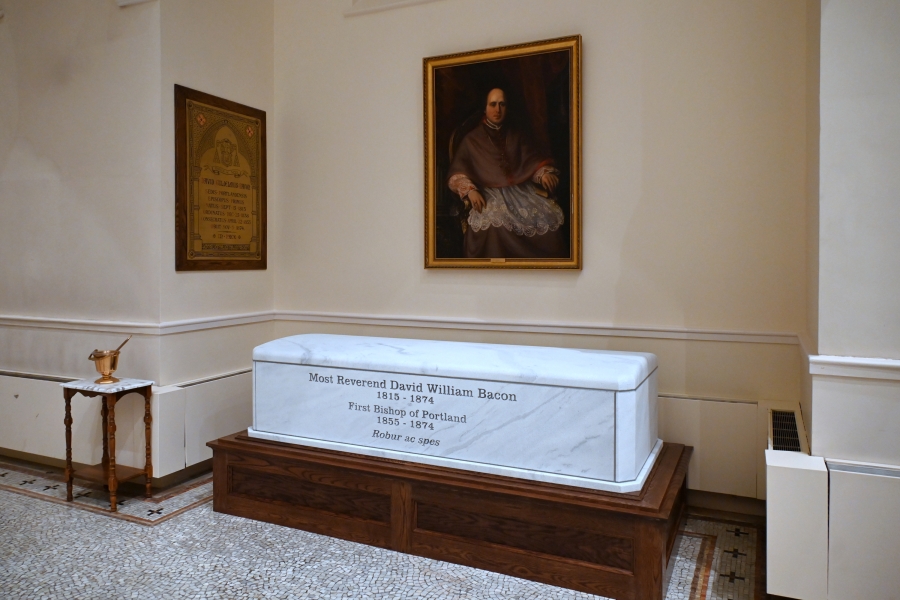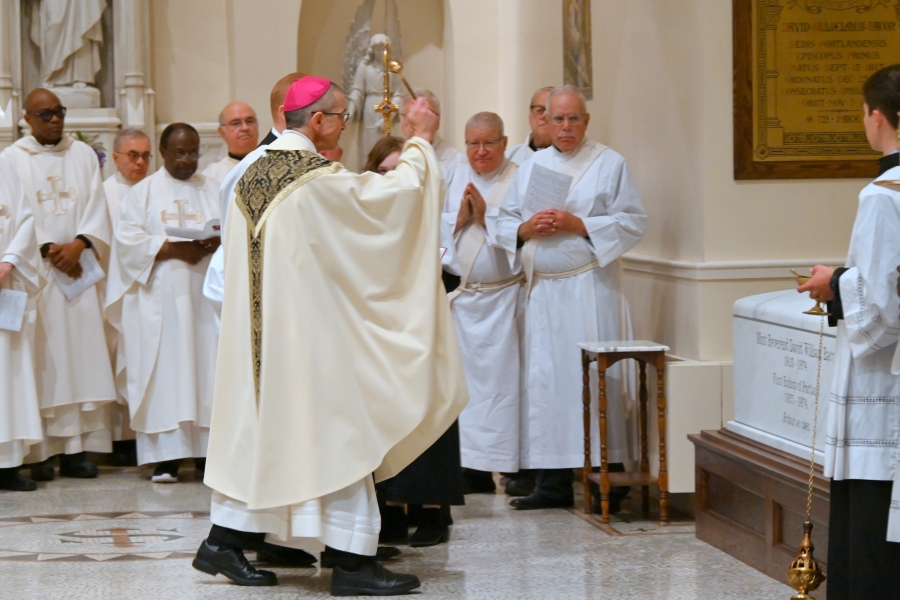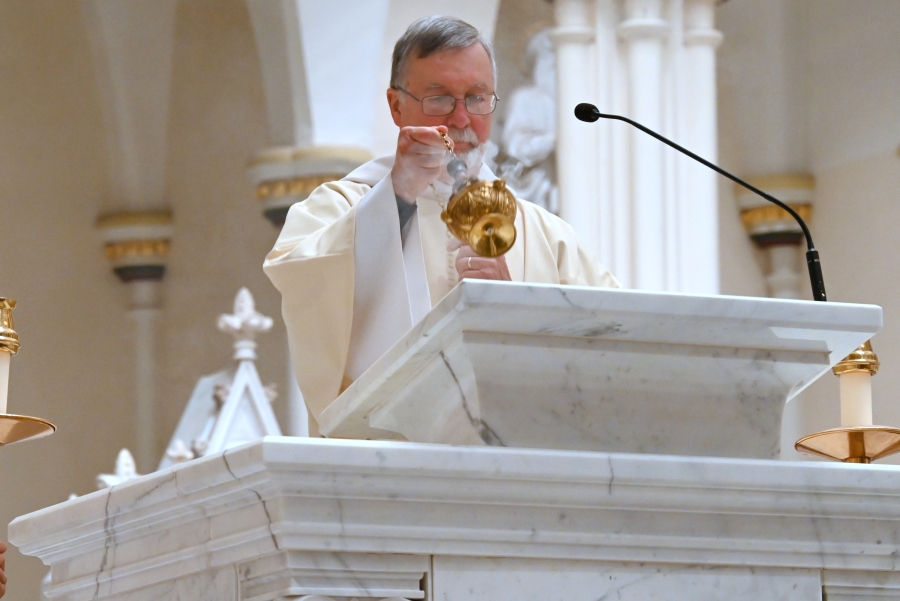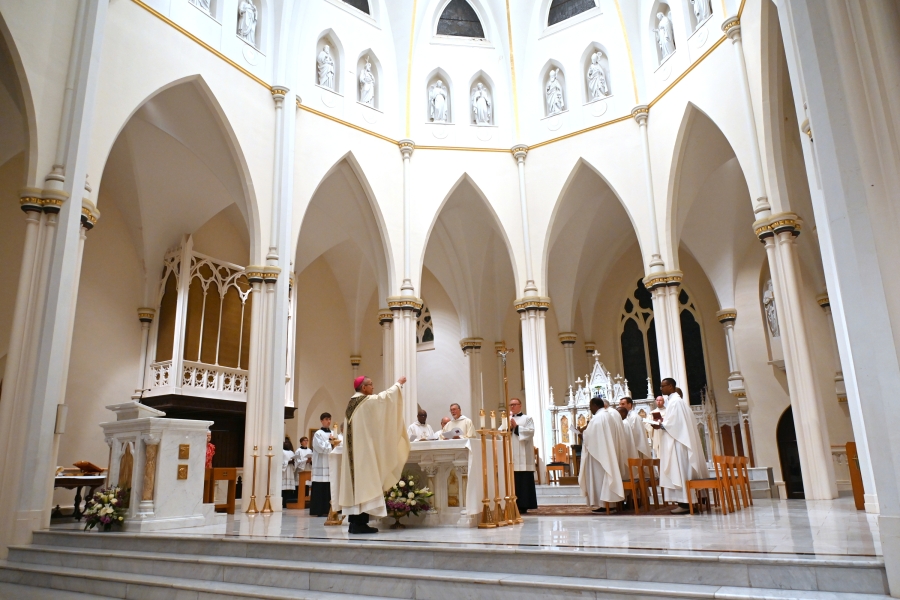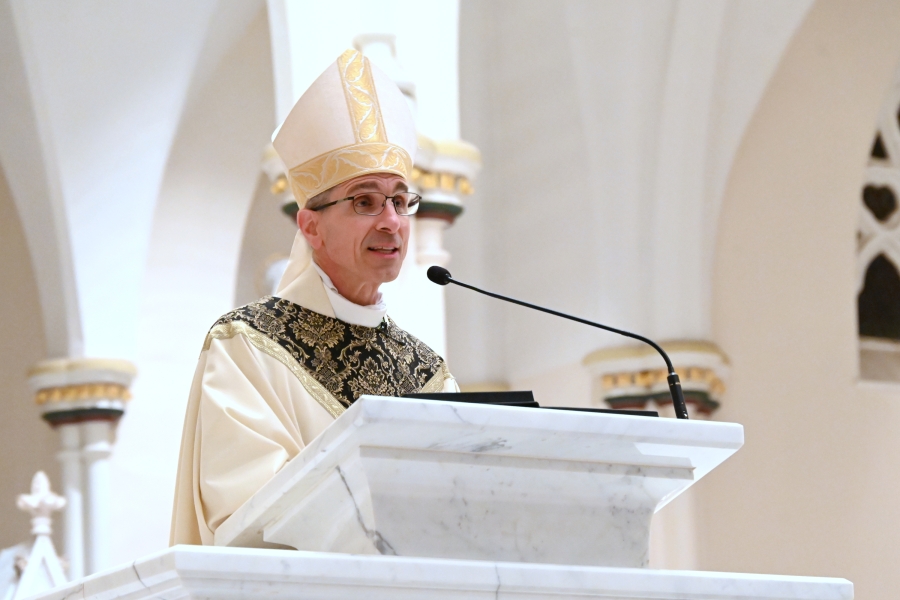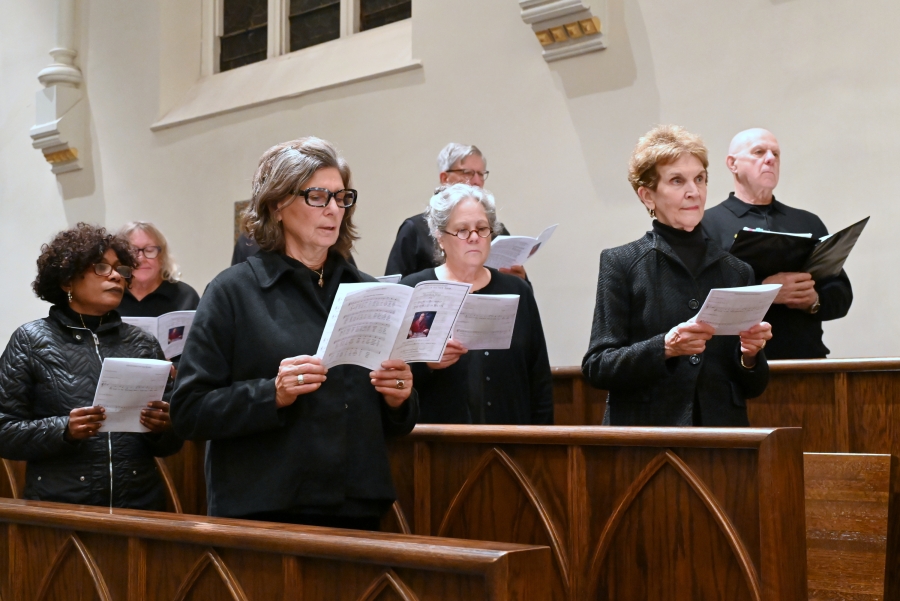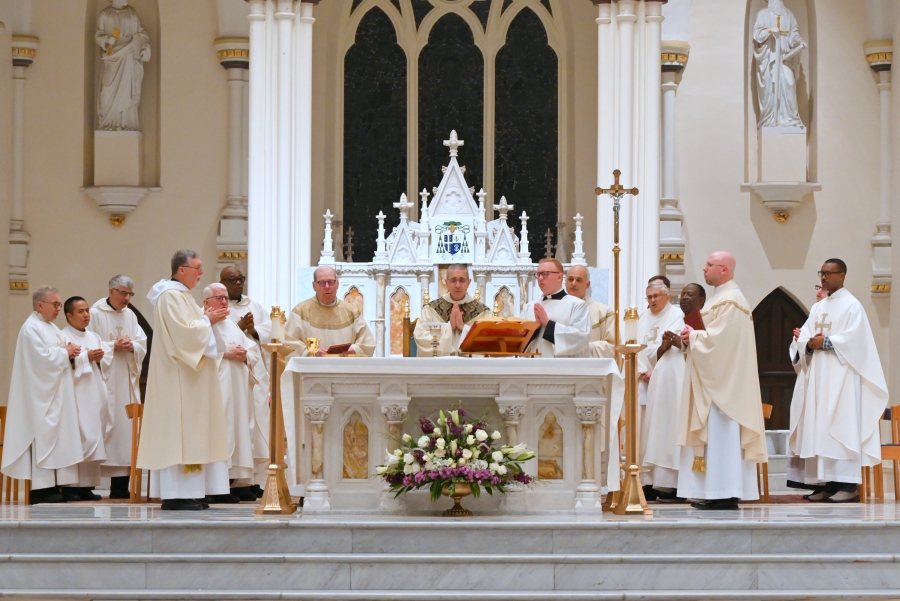Portland's first bishop is re-entombed at the Cathedral of the Immaculate Conception
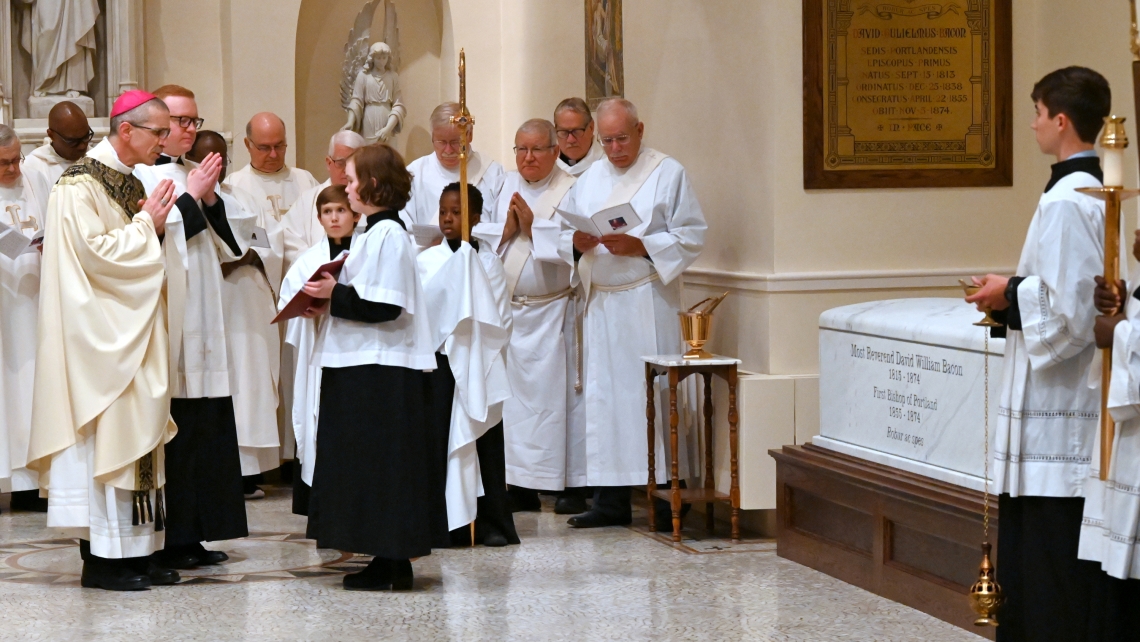
One hundred fifty-one years after his death, the faithful gathered on November 3 at the Cathedral of the Immaculate Conception in Portland for a memorial Mass for Portland’s first bishop and for the blessing of the bishop’s new tomb.
Bishop David William Bacon, who served as Bishop of Portland from 1855 to his death in 1874, was previously buried in a crypt beneath the cathedral. However, with that area no longer accessible to the public, the decision was made to transfer his remains to a new sarcophagus located within the main cathedral, providing him a place of honor and respect where people are now able to stop and pray.
“As we gather to entomb him anew, we are not simply reinterring the past; we are reawakening gratitude and renewing purpose,” said Bishop James Ruggieri, who celebrated the Mass. “Today, as we bless his new sarcophagus and commend his remains to rest once more within the upper portion of the cathedral, we recall both the hope of resurrection that he embraced and the heritage of faith that he helped to plant in this soil.”
When Pope Pius IX established the Diocese of Portland in 1853, Bishop Bacon was appointed its first shepherd. He was consecrated in New York on April 12, 1855, and installed at St. Dominic Church in Portland on May 31 of that year. At that time, the cathedral had not yet been built.
As Bishop Ruggieri noted in his homily, the diocese’s first bishop faced numerous challenges.
“Imagine the task before him: a diocese encompassing both Maine and New Hampshire, with only 10 priests – five diocesan and five Jesuits – and a smattering of parishes across vast distances. There was little infrastructure, one school at St. Dominic’s in Portland, and immense spiritual need,” Bishop Ruggieri said.
Bishop Bacon sought priests to help him address that spiritual need, and under his leadership, work began on building a new cathedral. The new bishop persevered even after the Great Portland Fire of 1866 destroyed the already built chapel, the convent, the bishop’s residence, the school, and the partially built walls of the cathedral.
“Although it was once destroyed by fire, it was rebuilt by faith. This story is a parable of the Church itself: wounded, rebuilt, and forever renewed by God’s grace,” Bishop Ruggieri said. “The same spirit that inspired Bishop Bacon to rebuild these walls must inspire us to renew the living Church: our parishes, our schools, our hearts.”
When Bishop Bacon died on November 5, 1874, the diocese had grown to 63 churches, 23 schools, and 52 priests. Bishop Bacon had also brought the Sisters of Mercy to Maine to teach children.
“He had built not only institutions but faith itself, a faith that endures to this day in the lives of countless families, parishes, and communities,” Bishop Ruggieri said.
Bishop Ruggieri was joined by Bishop Emeritus Robert Deeley for the memorial Mass, along with 15 priests who traveled from as far away as Bangor and Old Town to attend. Five permanent deacons also participated in the Mass.
Bishop Louis Sebastian Walsh, the fourth bishop of Portland, was also buried in the crypt beneath the cathedral. His body was reinterred at Calvary Cemetery in South Portland during a ceremony held last May.
